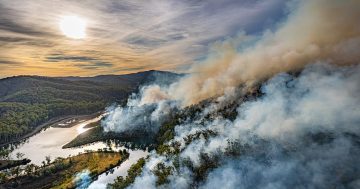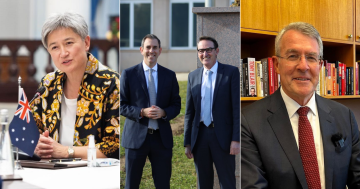
Millions of dollars from the landfill levy will go towards waste management. Photo: File.
Improvements to Tasmania’s waste management systems will be boosted by $3 million funded through high-priority grants from the Tasmanian Landfill Levy.
Designed to support the transition of the waste and resource recovery industry towards a circular economy, a 9 February release says the grants will come from the Tasmanian Landfill Levy instead of taxpayer funds. It says this demonstrates the value of the levy in supporting the resource recovery industry’s transition, growth and evolution.
Minister for Environment and Climate Change Roger Jaensch said the High Priority Investment Package was supported by the government and the Tasmanian Waste and Resource Recovery Board in an effort to improve waste management and waste recovery.
“Funded by the Tasmanian Landfill Levy, the package includes four programs set to be rolled out in the first six months of 2024 targeting infrastructure, education, remote councils and industry partnerships,” he said.
“Applications are now open for the first grant offering, the High Priority Infrastructure Grants, from 9 February 2024 until 28 March 2024,” he added.
“The programs under the package focus on supporting government and commercial infrastructure projects to enable resource recovery and build the Tasmanian circular economy.”
Tasmanian Waste and Resource Recovery Board Deputy Chair Matthew Greskie said he was pleased to be announcing the grants.
“These grants, delivered under the High Priority Investment Package, support the implementation of the Tasmanian Waste and Resource Recovery Strategy 2023-26,” he said.
“They will help assist remote councils, schools, industry and the resource recovery sector work towards helping Tasmania be a place where nothing is wasted.”
The grants are between $10,000 and up to $500,000 depending on the scale and complexity of the project.
These first grants are focussed on supporting infrastructure projects designed to improve the capability and capacity of facilities, equipment and systems directly supporting resource recovery.
Submissions will be prioritised if they can demonstrate a clear improvement of the reuse, repair, collection, sorting, processing, recycling and remanufacturing of priority materials that pose the highest risk, face significant market barriers or are of strategic value.
These include construction and demolition products and materials, plastics products and packaging, agricultural, aquacultural and industrial plastics, organics, tyres, textiles, and oil and chemical solvents.
Information about the grant program and guidelines are available at http://wrr.tas.gov.au/industry-support-programs. Details about additional grants programs will be released in the coming months at https://wrr.tas.gov.au/.











